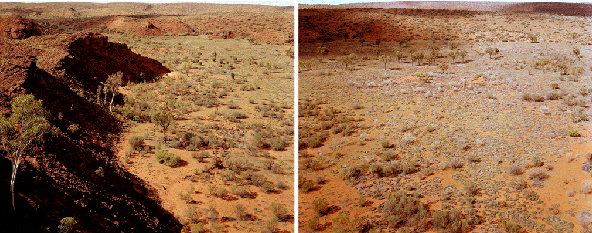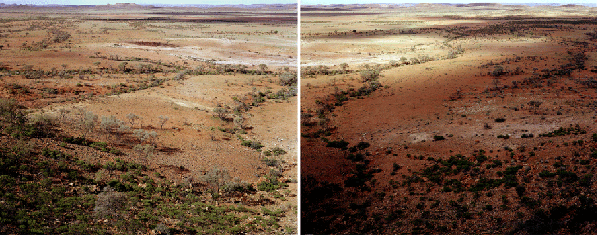Different Dimension
represents
"Marking Time" by David
Stephenson, Australia



Photography's
relationship to time is at the heart of its perceived truthfulness.
Whether it purports to be a factual record or a fictional artifice, the
photographic seems to encode time
itself in a particular way. Light exists only in
constant movement, within discrete temporal periods.
Thus all photographic processes,
which must use light as their agent, record a particular interval
of time, always in the
past, but represented in an eternal present.
David Stephenson's recent large format colour photographs explore the
passage of time in the environment.
Representations of momentary or extended natural processes - including
human actions such as grazing,
forestry, fire, mining, and residential development - mark the
environment as a site of flux, its equilibrium
contested by various forces and competing value systems. The use of a
diptych structure is frequently
employed to mark these momentary changes, from a shift in light to the
movement of cloud shadows
across the landscape.
These momentary changes are contrasted to the sense of deep
cosmological time referenced by the
night sky. The light of distant stars may take tens of thousands of
years to reach us, and so my camera
is recording not just the present moment but also looking back into
time, using light originating from
distant prehistory, and the rotation of the earth, to "draw" on the
photographic film. Star Fugue I-IV
records the time of eight nights in Central Australia in 2005, mapping
a 360-degree panorama of the
night sky earth as a set of four double exposures of nine hours
duration each.
Back





